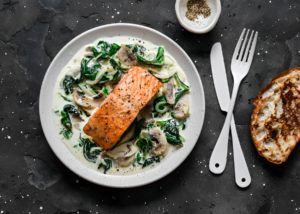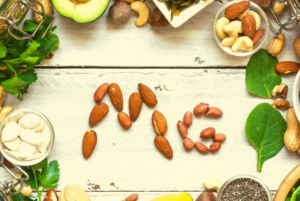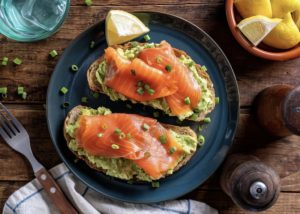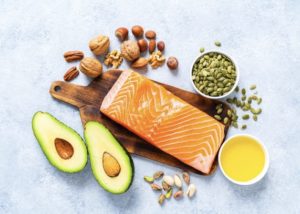- Home
- /
- Healthy Meal
- /
- Diets
- /
- LCHF diet
- /
- LCHF Diet: A Deeper...
In a world inundated with diet trends and nutritional philosophies, LCHF diet (the Low Carb, High Fat diet) emerges as more than just a fleeting craze—it stands as a transformative approach to nourishing the body and redefining the way we perceive fats and carbohydrates. As individuals seek sustainable and science-backed paths to well-being, the LCHF diet beckons, inviting them to embrace a paradigm shift in their relationship with food.
Picture this: a dietary strategy that challenges conventional norms, encouraging a departure from the fear of fats and the ubiquitous presence of refined carbohydrates. The LCHF lifestyle unfolds as a journey not just towards shedding pounds but also towards optimizing metabolic health, fostering mental clarity, and potentially offering therapeutic benefits for an array of health conditions.
In this exploration of the LCHF diet, we delve into the intricacies of its principles, unravel the mechanisms that set it apart, and navigate the diverse terrain of its potential applications. Join us on a voyage through the permitted and prohibited foods, witness the science behind the metabolic magic, and discover how this approach is not merely a diet but a holistic lifestyle—one that empowers individuals to take charge of their health and well-being. Welcome to the realm of LCHF, where the pursuit of optimal health unfolds through the mindful choices we make on our plates and the profound impact they have on our bodies and minds.
1. Comprehensing the Basics: Key Components
The LCHF diet revolves around a fundamental shift in macronutrient consumption, prioritizing the reduction of carbohydrates and an increased intake of healthy fats. By minimizing the intake of high-carb foods like bread, pasta, and sugary snacks, the body enters a state of ketosis, where it first burns fat for energy in place of carbohydrates.
More about proteins-fats-carbs ratio read in the article: Proteins Fats Carbohydrates Ratio in Healthy Eating: Why matters
1.1. Low Carbohydrate Intake
The cornerstone of the LCHF diet is restricting carbohydrate intake. This involves minimizing the consumption of refined sugars, grains, and starchy vegetables. Instead, focus is placed on obtaining carbohydrates from nutrient-dense sources like non-starchy vegetables and small amounts of berries.
Calculator with proteins-fats-carbs ratio here
1.2. High Healthy Fat Intake
Contrary to the misconception that all fats are harmful, the LCHF diet countenances the consumption of healthy fats. Avocado, olive oil, nuts, seeds, and fatty fish are abuntant sources of these essential fats, contributing to satiety and providing a steady source of energy.
2. Unveiling the Mechanisms: How the LCHF Diet Works
Understanding the intricacies of how the Low Carb, High Fat (LCHF) diet works requires a closer look at the metabolic shifts that occur within the body. The magic lies in the profound impact this dietary approach has on key physiological processes, ushering in a cascade of changes that contribute to its remarkable effectiveness.
2.1. Entering Ketosis
The cornerstone of the LCHF diet is inducing a state of ketosis. When carbohydrate intake is significantly reduced, the body’s major energy source—glucose derived from carbohydrates—becomes scarce. In response, the liver begins to break down stored fat into ketones, an disjunctive fuel source. Ketones are then utilized by the body and brain, creating a metabolic environment that encourages fat burning.
2.2. Regulating Insulin Levels
Carbohydrate consumption prompts the release of insulin, a hormone responsible for transporting glucose into cells for energy. The LCHF diet, with its limited carbohydrate intake, minimizes the need for frequent insulin spikes. This not only aids in weight loss by reducing fat storage but also helps improve insulin sensitivity, making it an attractive option for those with insulin resistance or type 2 diabetes.
2.3. Appetite Control and Satiety
Consuming healthy fats and an adequate amount of protein on the LCHF diet contributes to prolonged feelings of fullness and satisfaction. Unlike high-carb meals that often lead to steep spikes and crashes in blood sugar, the balanced macronutrient composition of LCHF meals helps stabilize energy levels, reducing the temptation to indulge in frequent snacking.
2.4. Metabolic Flexibility
The LCHF diet promotes metabolic flexibility, allowing the body to smoothly shift between burning glucose and ketones for energy. This adaptability becomes particularly beneficial during periods of fasting or low food availability, as individuals following the LCHF lifestyle can tap into their stored fat reserves efficiently.
2.5. Inflammation Reduction
Chronic inflammation is a contributing factor to various health issues. By incorporating anti-inflammatory fats like omega-3 fatty acids found in fatty fish and flaxseeds, the LCHF diet may contribute to a reduction in overall inflammation levels, supporting overall health and well-being.
It’s the harmonious interplay of these mechanisms that sets the LCHF diet apart, offering a holistic approach to health that spreads beyond mere weight management. By leveraging the body’s innate ability to adapt and thrive on diverse fuel sources, the LCHF diet emerges as a compelling and sustainable choice for those seeking a transformative journey towards improved health and vitality.
3. Potential Benefits of LCHF
3.1. Weight Management
One of the primary reasons individuals turn to the LCHF diet is for its potential in contributing weight loss. By reducing insulin levels and encouraging the body to burn accumulated fat, many have experienced significant weight loss and improved body composition.
More about weight management read in our section: Weight Reduction
3.2. Blood Sugar Control
For individuals with insulin resistance or type 2 diabetes, the LCHF diet may offer benefits in regulation blood sugar levels. By minimizing carbohydrate consumption, the diet helps regulate insulin secretion, preventing blood sugar spikes and crashes.
3.3. Increased Energy and Mental Clarity
As the body adapts to burning fat for fuel, many individuals report enlarged energy levels and bettered mental cleareness. This is attributed to the stable energy supply provided by fats, reducing the reliance on glucose for energy.
About diet for our brain read in the article: The MIND Diet: Nourishing Your Brain for Optimal Health
4. Considerations and Cautions
While the LCHF diet has shown promise for many, it’s essential to approach any dietary change with careful consideration. Some important factors to keep in mind include:
4.1. Individual Variability
Each person’s response to the LCHF diet can vary. While some thrive on this approach, others may not experience the same benefits. It’s crucial to monitor individual responses and make adjustments as needed.
More about why individuality is important read in the article: First principle of Healthy Eating: Your Bio-Individuality
4.2. Nutrient Diversity
To avoid nutritional deficiencies, individuals following the LCHF diet should prioritize a diverse intake of nutrient-rich foods. Incorporating a variety of vegetables, proteins, and fats ensures a well-rounded nutritional profile.
About why diversity is important read in the article: His Majesty Microbiom: Why Variety in Eating is Great
4.3. Consultation with Healthcare Professionals
Before embarking on any significant dietary change, it’s advisable to consult with healthcare professionals, especially for individuals with pre-existing health conditions or concerns.
Make an appointment with our functional nutritionist follow the link
5. Permitted and Prohibited Products
Embarking on the Low Carb, High Fat (LCHF) diet involves a conscious selection of foods to maintain the delicate balance of macronutrients. Understanding which foods are permitted and prohibited is essential for successfully adopting and reaping the benefits of this lifestyle.
5.1. Permitted Products
a. Healthy Fats
– Avocado: Rich in monounsaturated fats and fiber.
– Olive Oil: A staple in Mediterranean diets, offering heart-healthy monounsaturated fats.
– Coconut Oil: Contains medium-chain triglycerides (MCTs), providing a quick energy source.
b. Protein Sources
– Fatty Fish: Salmon, mackerel, and sardines offer omega-3 fatty acids.
– Poultry: Chicken and turkey provide lean protein.
– Eggs: A versatile source of protein and healthy fats.
c. Low-Carb Vegetables
– Leafy Greens: Spinach, kale, and Swiss chard are nutrient-dense options.
– Cruciferous Vegetables: Broccoli, cauliflower, and Brussels sprouts are low in carbs and high in fiber.
d. Nuts and Seeds
– Almonds, walnuts, chia seeds, and flaxseeds offer a satisfying crunch and healthy fats.
e. Dairy
– Full-Fat Cheese: Opt for cheeses like cheddar, mozzarella, and cream cheese.
– Greek Yogurt: Choose full-fat, unsweetened varieties.
f. Berries
– Limited quantities of berries, such as strawberries and blueberries, add natural sweetness with fewer carbs.
5.2. Prohibited Products
a. High-Sugar Foods
– Candy, sweets, and sugary beverages should be strictly avoided.
Comprehensive guide about sugar read in the article: Sugar: Its Impact on Health
b. Grains
– Wheat, rice, and other grains are high in carbohydrates and typically excluded.
c. Starchy Vegetables
– Potatoes, corn, and peas have higher carb content and are limited.
d. Processed Foods
– Highly processed snacks and convenience foods often contain hidden sugars and unhealthy fats.
What the most 10 harmful products read in the article: The Top 10 Most Harmful Products: Hidden Perils in Everyday Life
e. Fruits with High Sugar Content
– Bananas, grapes, and tropical fruits are restricted due to their higher sugar content.
f. Sweetened Beverages
– Sodas, fruit juices, and sweetened teas contribute unnecessary sugars.
g. Highly Processed Oils
– Vegetable oils such as soybean and corn oil are often excluded due to their high omega-6 fatty acid content.
h. High-Carb Alcoholic Beverages
– Beer and sweet cocktails can disrupt ketosis and should be consumed in moderation.
Adhering to the list of permitted and prohibited products is crucial for achieving and maintaining the desired metabolic state on the LCHF diet. While the focus is on nutrient-dense, whole foods, it’s equally important to stay mindful of individual responses and make adjustments as needed. Consulting with a nutritionist or healthcare professional can provide personalized guidance, ensuring a seamless integration of the LCHF lifestyle into daily nutrition.
6. Different Health Conditions
The versatility of the Low Carb, High Fat (LCHF) diet extends beyond weight management, making waves in the therapeutic landscape by showcasing potential benefits for various health conditions. From metabolic disorders to neurological issues, the LCHF diet’s impact on these conditions is a subject of growing interest among researchers and health professionals.
6.1. Metabolic Disorders: Type 2 Diabetes and Insulin Resistance
The LCHF diet shines as a beacon of hope for individuals grappling with type 2 diabetes and insulin resistance. By curbing carbohydrate intake and minimizing the need for frequent insulin spikes, the diet can contribute to enhanced blood sugar regulation. Some researches request that LCHF may help individuals reduce their reliance on medication and experience positive shifts in insulin sensitivity.
6.2. Neurological Conditions: Epilepsy and Neurodegenerative Disorders
The therapeutic potential of the LCHF diet extends to the realm of neurological conditions. Historically, the diet has been used as a treatment for epilepsy, particularly in children. Emerging research also explores the role of LCHF in neurodegenerative disorders like Alzheimer’s disease and Parkinson’s disease, with some studies indicating potential cognitive benefits and neuroprotective effects.
6.3. Cardiovascular Health: Heart Disease and Lipid Profiles
Contrary to conventional beliefs, the LCHF diet may have a positive impact on cardiovascular health. Some studies submit that it can improve lipid profiles by increasing high-density lipoprotein (HDL) cholesterol and reducing triglycerides. The diet’s focus on healthy fats, like those detected in avocados and olive oil, may contribute to a heart-healthy lifestyle.
6.4. Polycystic Ovary Syndrome (PCOS): Hormonal Balance and Insulin Sensitivity
Women with Polycystic Ovary Syndrome (PCOS) often struggle with hormonal imbalances and insulin resistance. The LCHF diet may offer benefits by stabilizing blood sugar levels and improving insulin sensitivity. This, in turn, can contribute to hormonal balance and help manage symptoms associated with PCOS.
6.5. Inflammatory Conditions: Rheumatoid Arthritis and Inflammatory Bowel Diseases
Chronic inflammatory conditions like rheumatoid arthritis and inflammatory bowel diseases may find relief in the anti-inflammatory properties of the LCHF diet. By incorporating omega-3 fatty acids and reducing pro-inflammatory foods, individuals with these conditions may experience a reduction in symptoms and improved quality of life.
It’s important to note that while the LCHF diet shows promise in various health conditions, individual responses can vary. Consulting with healthcare professionals, especially specialists familiar with specific conditions, is crucial for tailoring the diet to individual needs and ensuring a comprehensive approach to health and well-being. As research in this field continues to evolve, the LCHF diet stands as a dynamic player in the pursuit of holistic health across a spectrum of conditions.
Conclusion: Charting a Course Towards Wellness: The LCHF Finale
The Low Carb, High Fat diet stands as a compelling approach to nutrition, challenging conventional beliefs about fat consumption. With its potential benefits in weight management, blood sugar regulation, and enhanced well-being, the LCHF diet continues to capture the interest of individuals seeking a sustainable and science-backed way to optimize their health. As with any dietary approach, balance, individualization, and informed decision-making remain key to reaping the full benefits of the LCHF lifestyle.
Reflecting on the Journey
As we bring our journey through the Low Carb, High Fat (LCHF) diet to a close, it’s evident that this nutritional paradigm extends far beyond the realm of restrictive eating. It’s a dynamic journey towards holistic well-being, challenging preconceived notions and reshaping the narrative around fats and carbohydrates.
Embracing Dietary Diversity
The LCHF diet is not a one-size-fits-all solution but a versatile approach that accommodates diverse health goals. Whether you’re seeking weight management, blood sugar regulation, or a holistic lifestyle transformation, the principles of this diet offer a roadmap to navigate the complex landscape of nutritional choices.
Impact Beyond the Scale
As we bid farewell to this exploration, it’s crucial to emphasize that the LCHF lifestyle is not a quick fix but a commitment to understanding and respecting the body’s intricate responses to the foods we consume. It invites us to savor the richness of nutrient-dense fats, explore the vibrant world of low-carb vegetables, and revel in the satiating power of wholesome proteins.
Nurturing Mindful Eating Habits
In the grand tapestry of health and nutrition, the LCHF diet emerges as a bold stroke, reminding us that optimal well-being is not about deprivation but about making informed, sustainable choices. It’s an invitation to cultivate a mindful relationship with food—one that honors the body’s wisdom and fosters a profound connection between nourishment and vitality.
Looking Forward
As you step forward from this exploration, may the principles of the LCHF diet continue to guide you on your journey towards a healthier, more vibrant life. Remember, it’s not just a diet; it’s a transformative lifestyle—one where balance, awareness, and the pursuit of optimal health dance harmoniously on the plate of your well-being. Cheers to your health, and may your path to wellness be as unique and fulfilling as the LCHF lifestyle itself.
































































0 Comments